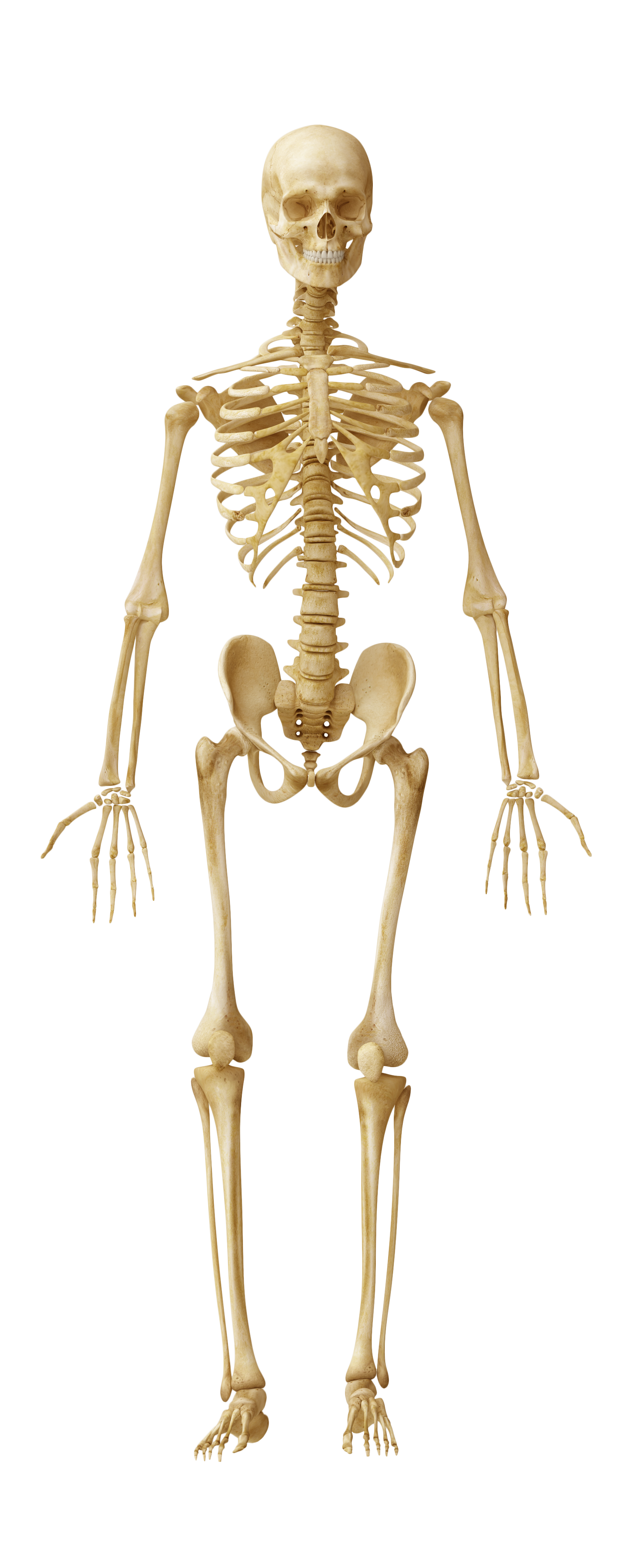OSTAAT™ is a non-invasive connected medical device designed for people affected by osteopenia or osteoporosis, with or without associated severe chronic kidney disease.
The technology involves applying a low-intensity electric current with no side effects. The current acts on cell membrane mechanisms, allowing calcium to enter the cells, thus promoting bone growth.
The technology can be used preventively, to reduce the risk of fractures of all kinds, or curatively, to accelerate the healing process of fractures* caused by osteoporosis, severe chronic kidney disease, or other conditions.
At the cutting edge of technology, the OSTAAT™ device in its prototype belt version for clinical studies and its smart clothing version, will be able to be activated via a mobile app accessible on cell phone, tablet, or computer.
* Claims will be addressed in future clinical trials.
A SOLUTION TO AN UNMET NEED

KAT Innovation's OSTAAT™ technology addresses an unmet need for over 850 million people worldwide with chronic kidney disease (CKD), including more than 135 million with severe CKD. This population has a high prevalence of osteoporosis, for which drug treatments are contraindicated. As a result, due to bone resorption, their bones become brittle, considerably increasing the risk of fractures and mortality associated with this comorbidity.
Learn more
Faced with this difficult situation, which affects a significant proportion of the population, KAT Innovation offers an accessible, easy-to-use technology that finally meets an unmet need for these patients.
Meeting a critical need in chronic kidney disease
KAT Innovation's revolutionary OSTAAT™ technology addresses a pressing global health challenge affecting more than 850 million people worldwide with chronic kidney disease (CKD), including 135 million individuals battling severe CKD. This vast patient population faces a critical dilemma: a high prevalence of osteoporosis combined with contraindications to traditional drug therapies.
The bone health crisis in the CKD
For patients with CKD, deteriorating bone health represents a serious threat. As bone resorption accelerates, their skeletal structure becomes increasingly fragile, greatly increasing the risk of fractures. This comorbidity not only diminishes quality of life, but also significantly increases mortality rates in this vulnerable group.
OSTAAT™: A revolutionary solution
In response to this urgent, unmet medical need, KAT Innovation has developed OSTAAT™ — an accessible, user-friendly technology. This innovative solution offers new hope to millions of CKD patients worldwide, providing an effective approach to managing bone health where conventional treatments fall short.
By offering an innovative alternative to traditional therapies, OSTAAT™ represents a potential paradigm shift in CKD patient care, filling a critical gap in current treatment options and potentially improving outcomes for millions of people worldwide.
SCIENTIFIC EVIDENCE
The OSTAAT™ device uses a sophisticated low-intensity electrical current to stimulate bone growth. This innovative and patented* technology, the result of rigorous academic research, has undergone extensive studies to elucidate its mechanism of action on osteogenesis.
* Patents pending.
Learn more
The scientific validation of OSTAAT™ is based on a comprehensive research program:
1. In vitro studies: examination of the direct effects of electrical stimulation on bone cells.
2. Ex vivo preclinical trials: validation of the efficacy of optimized electrical parameters on bone samples under controlled conditions.
3. Clinical investigations: evaluation of the device's efficacy and safety in human subjects.
These multidimensional studies have demonstrated OSTAAT™'s potential as a non-pharmacological alternative for osteoporosis and bone disorders related to chronic kidney disease, particularly for patients intolerant to traditional drug treatments.
The discovery of a link between electrical stimulation and bone growth led to an exhaustive review of scientific literature, generating new hypotheses currently being studied in collaboration with university researchers.
An in vitro study, conducted in partnership with UQAM since August 2022, has confirmed the initial hypothesis on the link between electrical stimulation and bone formation. The results validate the device's voltage parameters, essential for stimulating ion channels responsible for calcium deposition in cells.
These advances will soon be presented at scientific conferences and published in international journals, marking a crucial step towards launching a multicenter clinical study.
THE UNIQUENESS OF OUR SOLUTION


OSTAAT™ technology represents a groundbreaking advancement in the treatment of osteopenia and osteoporosis with or without severe chronic kidney disease, offering a unique and innovative approach to bone health management. This revolutionary device sets itself apart from traditional treatments in several keyways:
Learn more
1. Non-invasive and side-effect free: unlike many pharmacological treatments that can cause adverse effects, OSTAAT™ stimulates bone growth without any known side effects, muscle contractions, or unpleasant sensations.
2. Home-based, portable treatment: OSTAAT™ allows patients to self-administer treatment in the comfort of their own homes, improving accessibility and treatment adherence. This portability is a significant advantage over clinic-based treatments or bulky external devices.
3. Personalized therapy: the intuitive controller enables patients to customize treatment intensity, tailoring the therapy to their individual needs and comfort levels.
4. Internal stimulation of osteoblasts: OSTAAT™'s unique approach directly stimulates osteoblasts through low-intensity electrical current, promoting bone growth from within. This internal stimulation distinguishes it from external methods like electromagnetic fields or ultrasound waves.
5. Natural bone growth process: by influencing calcium deposition in bone cells, OSTAAT aligns with the body's natural bone growth processes, demonstrating a deep understanding of bone metabolism.
6. Smart clothing integration: OSTAAT™ technology can be incorporated into smart clothing, allowing patients to receive treatment while going about their daily routines without dietary restrictions or physical limitations.
7. Artificial intelligence and 5G connectivity: the device utilizes AI to create personalized treatment prediction models and leverages 5G technology for real-time reactions, ensuring optimal treatment efficacy.
8. User-friendly mobile app: OSTAAT™ can be controlled via a mobile app accessible on smartphones, tablets, or computers, enhancing ease of use and patient engagement.
By combining cutting-edge technology with a deep understanding of bone physiology, OSTAAT™ offers a safe, effective, and convenient alternative to traditional osteoporosis treatments. Its ability to stimulate bone growth without side effects, while allowing patients to maintain their normal lifestyle, makes it a promising solution for those seeking to improve their bone health and prevent fractures.
CLINICAL PATHWAY

OSTAAT™ technology shows promise in stimulating osteoblasts, counteracting osteoclast impact, and influencing H-type blood vessels crucial for bone homeostasis. This systematic approach aims to thoroughly validate this non-invasive bone growth technology, potentially offering a new treatment option for various bone-related conditions.
Our innovative approach to bone growth stimulation raised numerous questions regarding the effects of electrical stimulation on bone growth mechanisms. To address these, our scientific team conducted a comprehensive review of existing literature, identifying key areas for investigation.
Following this analysis, we initiated in vitro and ex vivo trials to elucidate and demonstrate the mechanisms of action of our OSTAAT™ technology. These preliminary investigations were designed to pave the way for future pilot and multicenter clinical trials, ultimately enabling us to validate the efficacy and safety of our device in human subjects.
Learn more
Our trials focused on testing hypotheses formulated by our scientific team regarding the relationships between OSTAAT™ electrical stimulation and various bone-related processes:
• Cell membrane action mechanisms.
• Calcium entry into cells.
• Differentiation between osteoblasts and osteoclasts.
• Bone formation and resorption processes.
• Voltage-gated ion channels.
• The role of parathyroid hormone (PTH).
• Blood calcium regulation.
• Type H blood vessels and endothelial cells.
Our scientists' hypotheses yielded promising results, suggesting that electrical stimulation OSTAAT™ at specific voltages influences cell membrane mechanisms, promoting calcium entry into bone cells and stimulating bone growth in a manner mimicking natural calcium influx pathways. These findings, currently confidential, will be the subject of forthcoming scientific publications.
The in vitro trials also addressed additional hypotheses, with results to be included in upcoming publications. This proof of concept has propelled us towards the next crucial phase: pilot and multicenter clinical trials involving patients with osteopenia, osteoporosis, or chronic kidney disease-related osteoporosis.
Preliminary results indicate a significant increase in bone mass using OSTAAT™, driving us towards more extensive clinical trials in collaboration with renowned institutions. Concurrently, we are exploring potential applications of our technology to support bone health in astronauts during extended space missions, offering a possible solution to bone density loss in microgravity environments.
Note: Submission of scientific articles for publication is scheduled for the first quarter of 2025. Detailed technical reports ("White Papers") are available upon request from our research team.
The clinical development of OSTAAT™ has followed a systematic approach, progressing from preliminary studies to planned human trials.
Current Focus: In Vitro and Ex Vivo Trials
• In vitro trials began in August 2022 at UQAM, collaborating with Professor Tatiana Scorza and master's student Arleth Pozo Delugo.
• These trials investigate mechanisms of action related to cell membranes, calcium entry, osteoblast/osteoclast differences, bone formation/resorption, voltage-gated ion channels, PTH hormone, blood calcium regulation, and type H blood vessels.
• Initial results demonstrate that OSTAAT™ electrical stimulation at specific voltages promotes calcium entry into bone cells, stimulating growth.
• An ex vivo preclinical trial on animal tissue, conducted at the Polytechnique de Montréal in June 2024, validated certain electrical parameters of OSTAAT™ technology.
Note: The submission of scientific articles for publication is planned for early 2025. Detailed technical reports ("White Papers") are available on request from our research team.
Next Steps: Clinical Studies
1. Pilot trials on osteoporosis patients:
These pilot trials will be conducted in collaboration with:
• Centre hospitalier de l'Université de Montréal (CHUM), Montreal, Canada: Principal investigator: Dr. Julio Fernandes, MD, PhD, MBA, FRCSC, orthopedic surgeon.
• Osteoporosis Medical Center, UCLA Health, Cedars Sinai Hospital, Los Angeles, USA: Co-investigator: Dr. Stuart L. Silverman, MD, F.A.C.P., F.A.C.R., Rheumatologist.
2. Multicenter clinical trial on patients with osteopenia, osteoporosis, and osteoporosis related to chronic kidney disease:
This multicenter clinical trial will be conducted in collaboration with all the following collaborators:
• Centre hospitalier de l'Université de Montréal (CHUM), Montreal, Canada: Principal investigator: Dr. Julio Fernandes, MD, PhD, MBA, FRCSC, orthopedic surgeon.
• Osteoporosis Medical Center, UCLA Health, Cedars Sinai Hospital, Los Angeles, USA: Co-investigator: Dr. Stuart L. Silverman, MD, F.A.C.P., F.A.C.R., Rheumatologist.
• Mongi Slim Hospital, Tunis, Tunisia: Dr. Ramzi Bouzidi, Chief Medical Officer of KAT Innovation, Orthopedic surgeon, Professor and VP of the Tunisian Society of Orthopaedic Surgery, Head of the Department of Orthopedic Traumatology.
• Pellegrin Hospital, Bordeaux University Hospital, Bordeaux, France: Dr. Thierry Schaeverbeke, M.D., Rheumatologist and Dr. Nadia Mehsen-Cetre, M.D., Rheumatologist.
• Chu Dupuytren Limoges EMIS Platform, Limoges, France: Responsible for setting and conducting the pre-clinical trial: Florence Bosselut.
• Regional University Hospital of Malaga, Malaga, Spain: Dr. Francisco Luna Cabrera and Dr. Ana Belen Paba.
• University of Granada Hospital, Granada, Spain: Dr. Rafael Caliz Caliz.
• Potential partners in England with NIHR/NHS.
Future projects
In vivo trials are planned for the next two years (2024-2026) to confirm the results, respond to the remaining hypotheses, and address other avenues.
Our main objectives include:
• Conducting multicenter clinical trials in collaboration with internationally renowned medical institutions.
• Evaluation of the effectiveness of OSTAAT™ in accelerating the healing process of fractures, with a particular focus on reducing bone consolidation time.
• Investigation of potential applications for maintaining astronaut bone health during long-duration space missions, in response to the challenges of bone density loss in microgravity.
• Exploring new therapeutic avenues.
These studies will not only validate our OSTAAT™ technology under various clinical conditions, but also explore its potential in cutting-edge fields such as space medicine.
